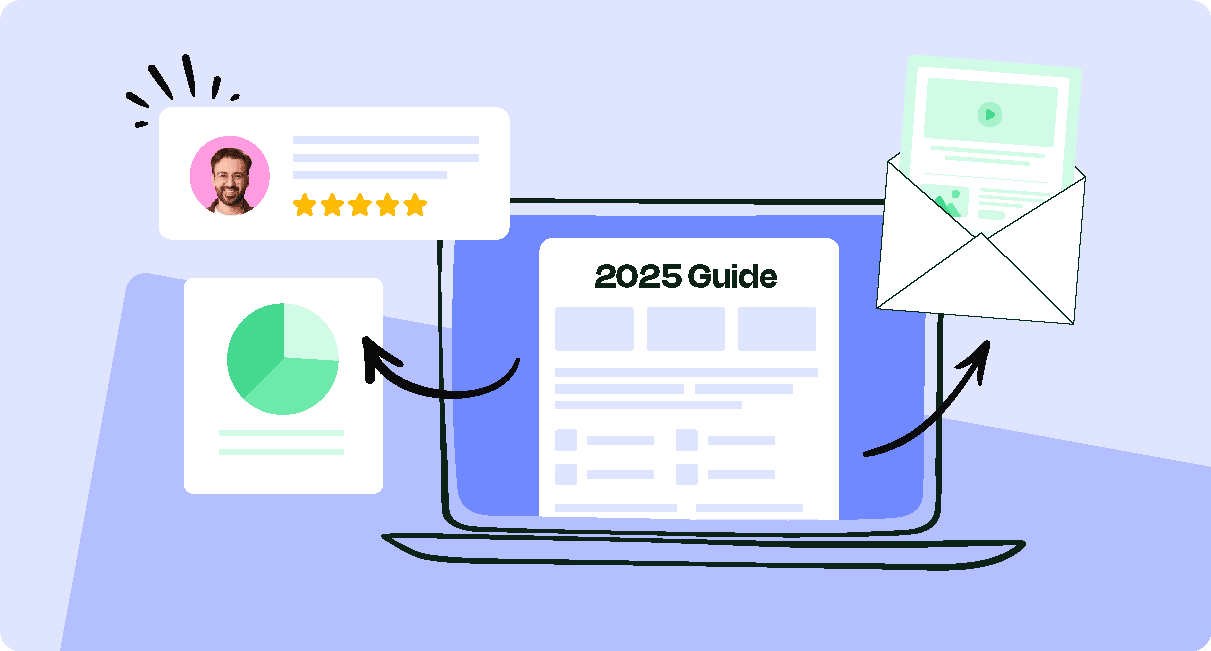Things are changing fast. In this article, we’ll cover today’s internal communications best practices to help you navigate change, prepare for continued evolution, and keep employees engaged.
As we’ve seen through the Global State of Internal Communications Report, workplace dynamics have never been more complex in a world grappling with so much change. Today, more than ever, it’s critical to maintain stability and cohesion amid change.
While companies with the best internal communication practices flourish and keep their employees engaged, methods need to evolve to keep up with changing times.
In this blog, we’ll explore 10 key approaches to help internal communications thrive in 2025 (and beyond). You’ll learn today’s best practices, and how to implement them effectively using ContactMonkey’s internal communication solutions and change management communication tactics.
Take self-guided tour of ContactMonkey
See how our key features can streamline your internal communications.
Take product tour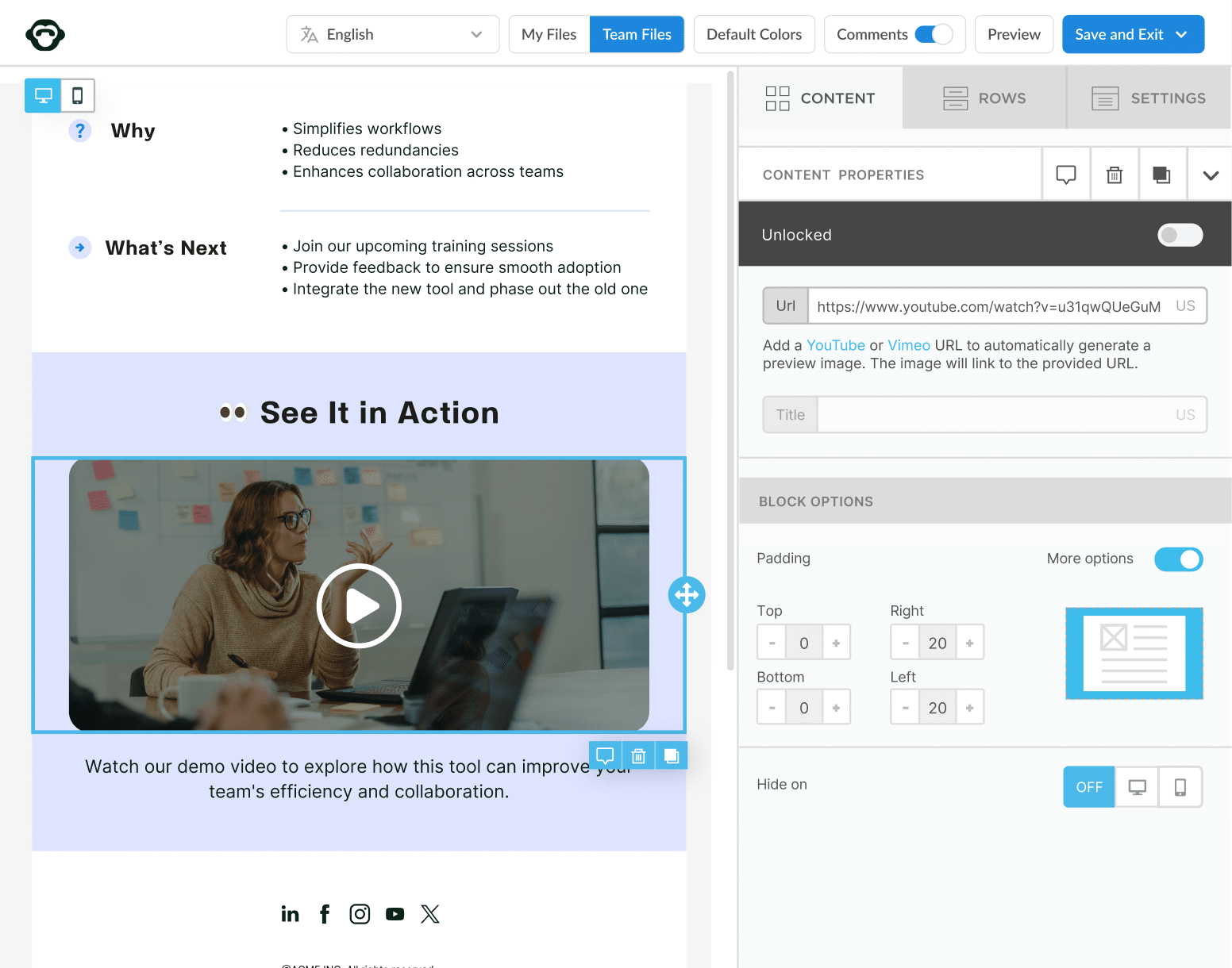
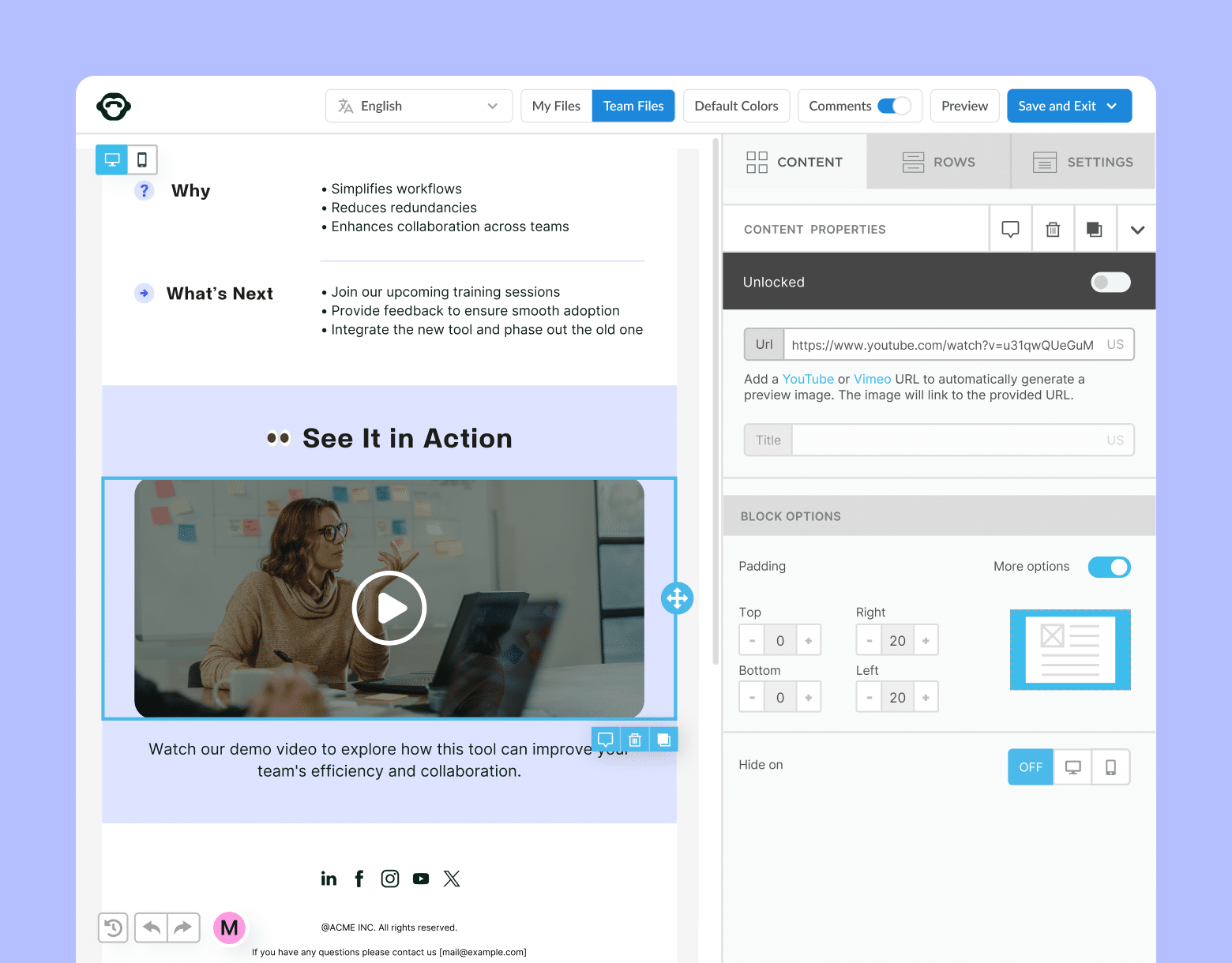
Why is Internal Communication So Important in 2025?
Amid changing markets, strong internal communication has emerged as a linchpin for resilience and success. Here are the top reasons why strong internal communication matters more than ever:
- Help to navigate uncertainty: Frequent, transparent updates help employees stay informed about market fluctuations, shifting company goals, and external events. This clarity alleviates anxiety, reduces rumors, and fosters a culture of trust.
- Maintain a cohesive culture: As remote and hybrid setups become the norm, it’s easy for teams to become siloed. Good internal comms and internal audience management—grounded in best practices for effective internal communication—keep employees connected to the organization’s core values, reinforcing a sense of community.
- Drive engagement and retention: When employees understand how their roles contribute to company objectives, they’re more motivated to perform at their best. Engaged teams are less likely to leave, meaning better retention rates and lower recruitment costs.
- Support innovation and collaboration: Companies that foster open dialogue and two-way communication see more idea-sharing and problem-solving across departments. The best internal communication channels encourage cross-departmental collaboration, sparking creativity and speedier decision-making.
- Adapt to technological advances: With AI and other emerging tools reshaping tasks almost daily, best practices for improving internal communication help organizations train, upskill, and prepare employees for the future of work.
10 Internal Communication Best Practices to Master in 2025
Below are 10 actionable techniques designed to strengthen your internal communications in 2025. Each comes with an explanation of its relevance, a few pointers on successful implementation, and real-world examples.
1. Align your internal communication strategy with broader goals
A frequent challenge in today’s fast-paced environment is losing sight of overarching objectives. Align your messages and internal communication goals with your organization’s vision and mission.
Why this matters:
- Proper alignment ensures your workforce sees how their daily tasks contribute to the success of the company.
- Engaged employees understand the “why” behind the “what,” which fosters motivation and reduces confusion.
How to implement:
- Outline the top company objectives at the start of every quarter.
- Develop a messaging matrix that ties each piece of communication—such as project updates or announcements—to strategic goals.
- Check in regularly with team leads to verify that communications remain consistent with organizational priorities.
Actionable example: A technology firm rolls out a weekly email highlighting one strategic goal and the initiatives driving it forward. Over time, employees see the direct impact of their roles on the firm’s broader ambitions.
PRO TIP: ContactMonkey allows you to create tailored email templates for internal announcements through the email template builder feature. This ensures that each message includes cues and summaries linking back to corporate aims—an essential facet of internal communication best practices.
Modern internal comms and measurement tools
No design or technical expertise needed. Save time, increase engagement, and dazzle your employees with fun and interactive communications.
Explore all features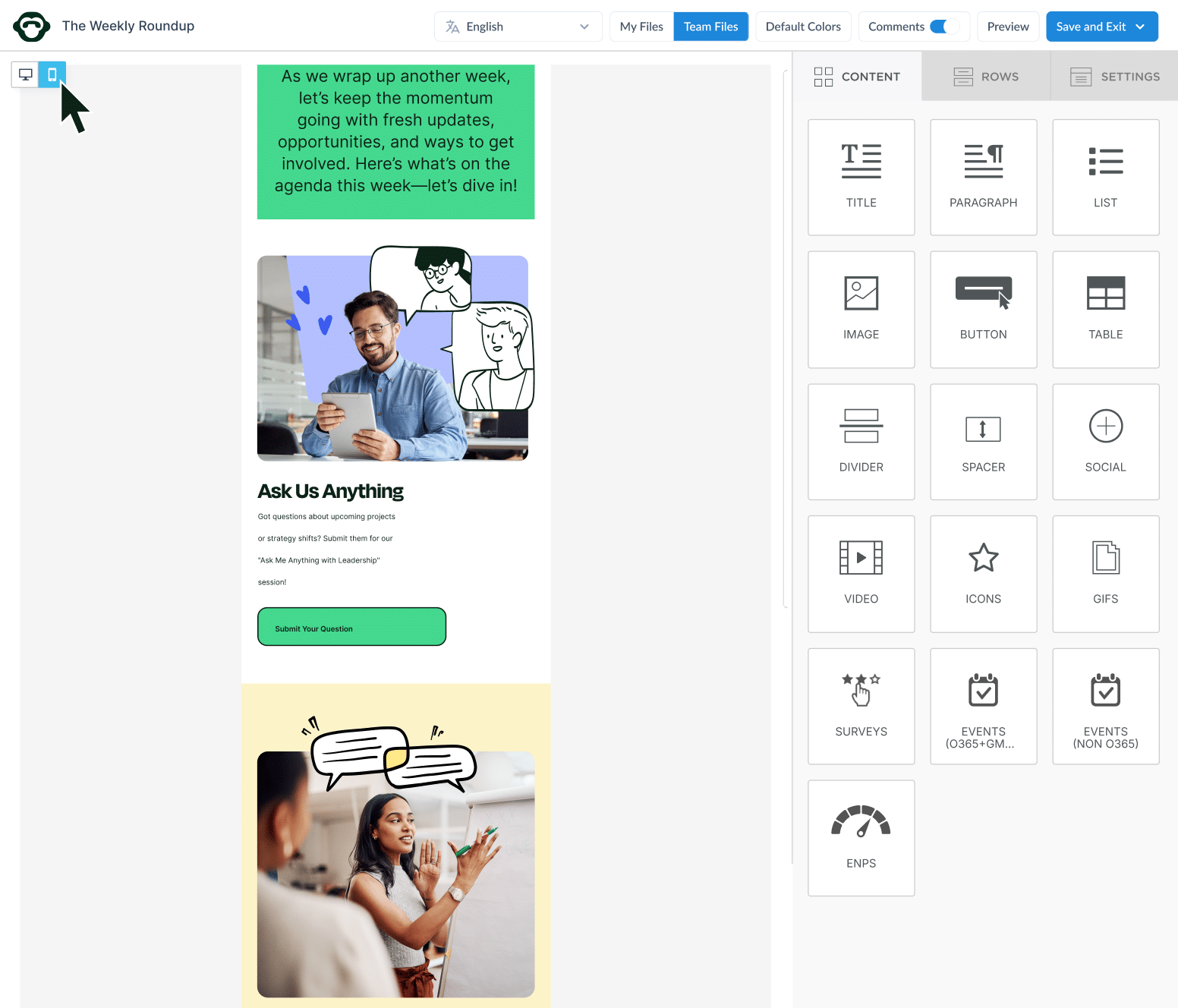
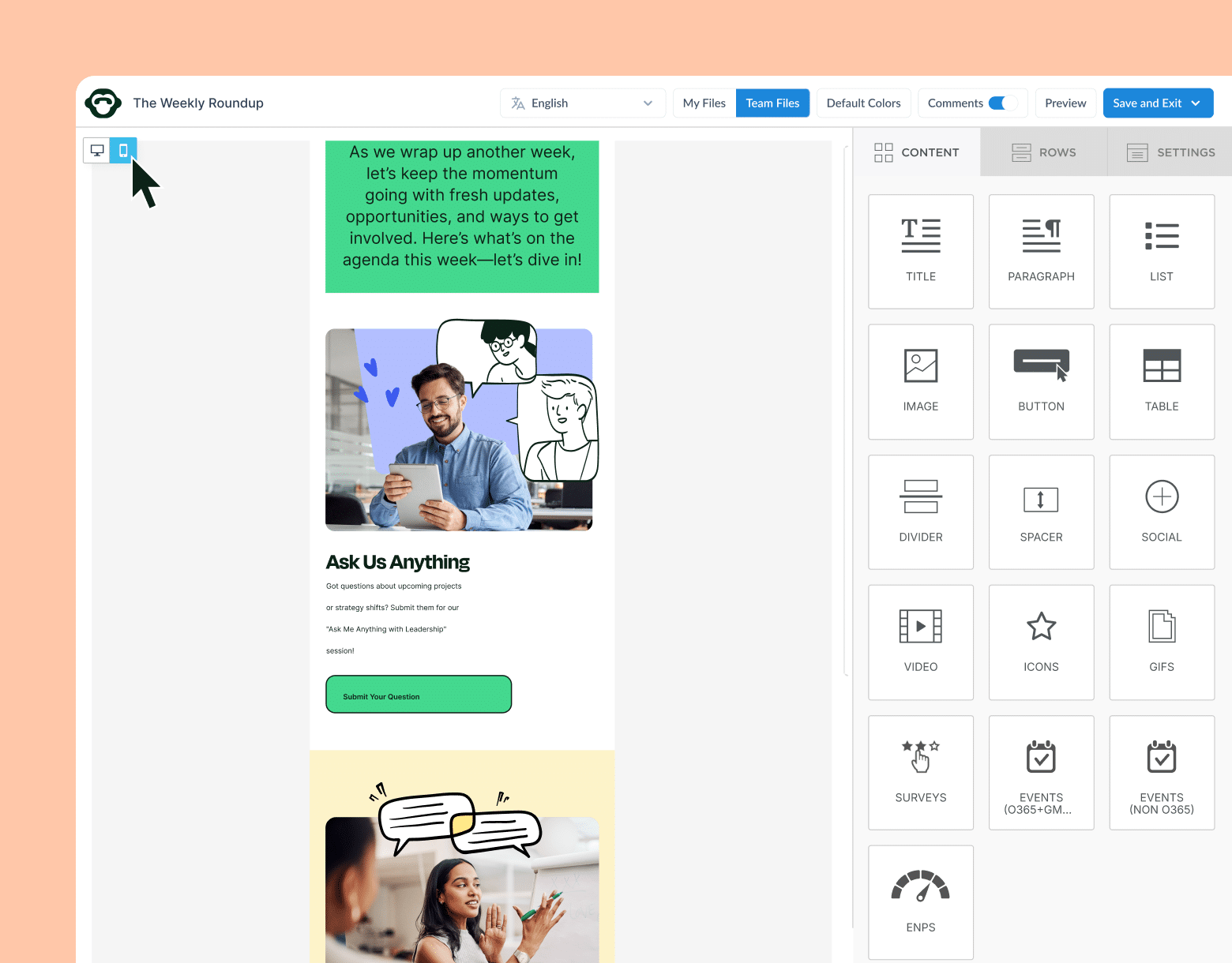
2. Diversify your internal communication channels
Relying on a single or even a few communication mediums can limit employee reach in 2025. Multi-channel approaches help you connect with dispersed teams, accommodate different learning styles, and ensure more comprehensive message retention.
Why this matters:
- Not every employee checks email frequently; some prefer instant messaging platforms, while others rely on mobile apps.
- A diversified approach ensures no one falls through the cracks.
How to implement:
- Audit your existing communication pathways—email, chat platforms, intranets, mobile notifications, and so on.
- Choose the best practice internal communication channels that suit your team’s demographics and workflows.
- Keep messaging consistent across channels to prevent confusion, but tailor tone and format to suit each medium.
Actionable example: A global consulting firm distributes corporate updates via email, follows up with a chat notification for immediate visibility, and stores important documents in a shared portal so employees can reference them anytime.
PRO TIP: Using multiple internal communication channels, combined with ContactMonkey’s analytics dashboard feature, helps you gauge which formats yield the most engagement. Use our guide to develop an internal communication channel matrix to get clear on what channels are working well for you and which ones you should let go of.
3. Leverage change management principles as best practices for internal comms
Embedding change management principles in your internal communications best practices ensures that employees remain informed, engaged, and supportive, no matter the size or scope of the shift.
Why this matters:
- Employees are more likely to embrace change when they understand the “why” behind it.
- Continuous shifts in the marketplace demand agile internal communication strategies to sustain trust.
How to implement:
- Set a clear vision: Tie every change initiative to broader company goals so teams grasp its importance.
- Establish two-way feedback: Encourage two-way dialogue through internal communication platforms—such as polls, live Q&As, and forum discussions—to surface concerns and address them quickly.
- Provide consistent updates: Use internal communication tools like dynamic mailing lists or chat groups to tailor messages for different departments, ensuring a personalized touch.
Actionable example: A healthcare organization rolling out a new patient data system creates a “Transition Hub” on the intranet. Employees can view rollout milestones, submit questions in a live chat, and access quick reference guides. Weekly emails summarize progress and highlight success stories from early adopters, reinforcing company-wide buy-in.
4. Empower frontline managers and change champions
Empowering frontline managers and “change champions” is key, especially when navigating transformation. These on-the-ground leaders reinforce best internal communication practices by fostering trust at every level.
Why this matters:
- Frontline managers are often the first point of contact for employees seeking clarity, so their buy-in and understanding are critical.
- Enthusiastic change champions promote alignment and engagement, reflecting best practices for effective internal communication.
How to implement:
- Equip managers with resources: Provide FAQs, training guides, and coaching sessions—backed by robust internal communication software—to clarify the change process and benefits.
- Select and train champions: Invite “champions” from each department or location to pilot programs and give them early insights. Their first-hand experiences will help them communicate the benefits and answer concerns effectively.
- Maintain ongoing support: Schedule regular check-ins to gather feedback, troubleshoot challenges, and refine messaging based on real-world observations.
Actionable example: A healthcare organization designates a “Champions Circle” of nurses and administrative leads to guide the rollout of a new patient-tracking system. Regularly scheduled video calls allow them to discuss pain points and solutions, modeling best practices for improving internal communication by keeping lines of discussion open.
PRO TIP: Provide champions and managers with analytics via ContactMonkey so they can see how well employees are engaging with updates and share these internal email analytics best practices. This will help them understand how to best leverage the data and help them fine-tune their approach, increasing adoption rates and reinforcing best practices for effective internal communication.
5. Develop or refine your AI policy—and distribute it strategically
With AI reshaping tasks from HR onboarding to predictive analytics, organizations must establish a clear and ethical policy. Best internal communication practices dictate that every employee understands both the benefits and boundaries of AI, ensuring responsible and secure adoption.
Why this matters:
- Clearly defined AI guidelines protect data integrity and legal compliance—a priority for for companies that focus on using AI safely.
- Transparent communication fosters trust and promotes a company-wide culture of innovation.
How to implement:
- Assemble a cross-functional team: Involve Legal, IT, HR, and Communication leads to develop a robust AI policy that aligns with best practices for improving internal communication.
- Real-world scenarios: Provide internal communication examples illustrating acceptable and prohibited AI use, offering practical context for employees.
- Multi-channel distribution: Email the policy, host a Q&A on your intranet, and integrate it into your internal communication channels so that no one misses these crucial details.
Actionable example: A financial services company launches an “AI Awareness Week,” combining daily email bulletins, short instructional videos, and a live webinar. They highlight the AI policy’s core directives and share success stories of early adopters.
PRO TIP: Add short surveys or polls powered by employee feedback features like ContactMonkey to gauge understanding of the AI policy. By analyzing this data, you can refine your policy messaging ensuring a responsible, future-ready workforce.
6. Encourage two-way communication feedback loops
Open dialogue fosters trust, engagement, and innovation. When you proactively gather employee feedback, you encourage them to share ideas, voice concerns, and shape the organization’s future.
Why this matters:
- Authentic feedback illuminates blind spots for leadership.
- Employees who feel heard are more engaged, loyal, and aligned with company values.
How to implement:
- Set up regular pulse surveys or feedback forms using specialized internal communication software.
- Allocate time in team meetings for open discussion.
- Act on feedback quickly—celebrate changes sparked by employee ideas to reinforce the value of contributions.
Actionable example: A nonprofit might implement anonymous digital suggestion boxes. Leaders commit to reviewing suggestions bi-weekly and sharing how they plan to act on them in an “Employee Voices” newsletter.
PRO TIP: ContactMonkey can embed quick pulse surveys in emails, ensuring higher participation rates and real-time visibility. As with all internal communication best practices feedback loops are a hallmark of success.
Watch ContactMonkey LIVE in action
Join live demo
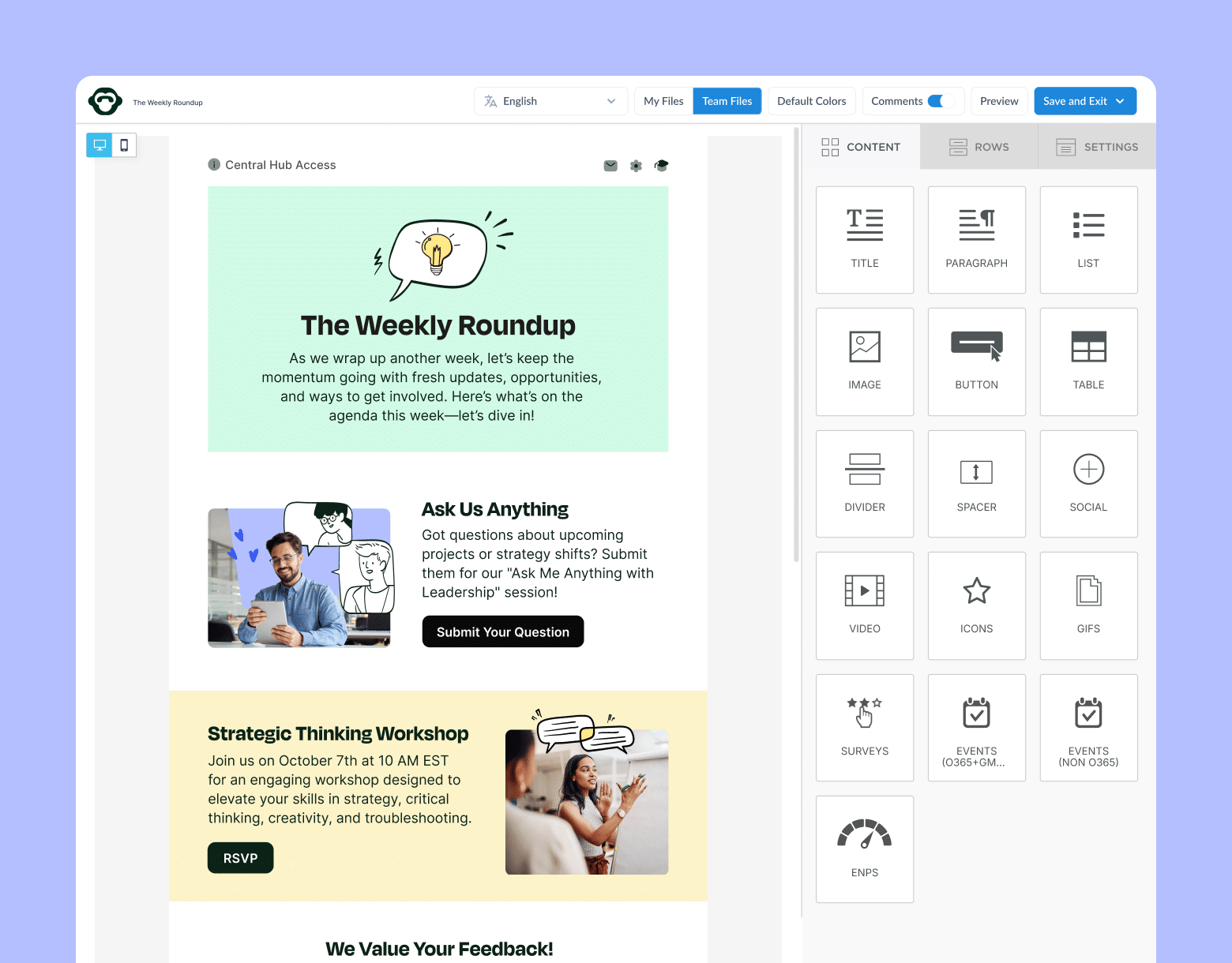
7. Personalize communications for target internal audiences
One-size-fits-all announcements often fall flat. Personalization—whether by team function, location, or interests—enhances relevance and clarity.
Why this matters:
- Different departments prioritize different information.
- Personalized messaging leads to higher engagement and reduces “message fatigue.”
How to implement:
- For your audience management strategy, use audience segmentation for internal comms principles and filter distribution lists by department, role, seniority, and more.
- Customize subject lines and content to reflect what resonates most with each group.
- Combine these targeted messages with broad company-wide updates to maintain transparency.
Actionable example: A manufacturing company might send a unique monthly newsletter to its sales team focusing on product updates and client wins, while the engineering group receives deeper dives into technology advancements and design processes.
8. Maintain consistent branding and tone
Whether you’re issuing a CEO announcement, a departmental update, or an onboarding document, consistency in look and feel conveys professionalism and unity.
Why this matters:
- A unified tone and style reassure employees they’re hearing one cohesive corporate voice.
- Familiar branding boosts recognition and helps employees quickly identify official messages.
How to implement:
- Develop a brand style guide for internal use, specifying color palettes, fonts, and voice characteristics.
- Train communication champions in each department on these guidelines.
- Audit communications regularly to ensure consistency.
Actionable example: A financial institution uses standardized email templates and intranet layouts, including a specific greeting and sign-off, so employees instantly know the message’s source and level of importance.
9. Avoid communication overload as an internal communication best practice
In a hyper-connected era, too many messages can cause confusion and fatigue. Streamlining communications helps you make sure that what you share truly stands out.
Why this matters:
- Overwhelming employees with frequent blasts dilutes the impact of important information.
- Receiving multiple messages through multiple platforms can lead to missed or ignored updates.
How to implement:
- Institute guidelines on how many mass emails or announcements can be sent weekly.
- Encourage departments to consolidate their updates into a single digest.
- Leverage a central hub—like a company intranet or chat channel—for less urgent topics.
Actionable example: A healthcare organization moves from daily email updates to a single weekly digest, supplemented by push notifications for mission-critical announcements only.
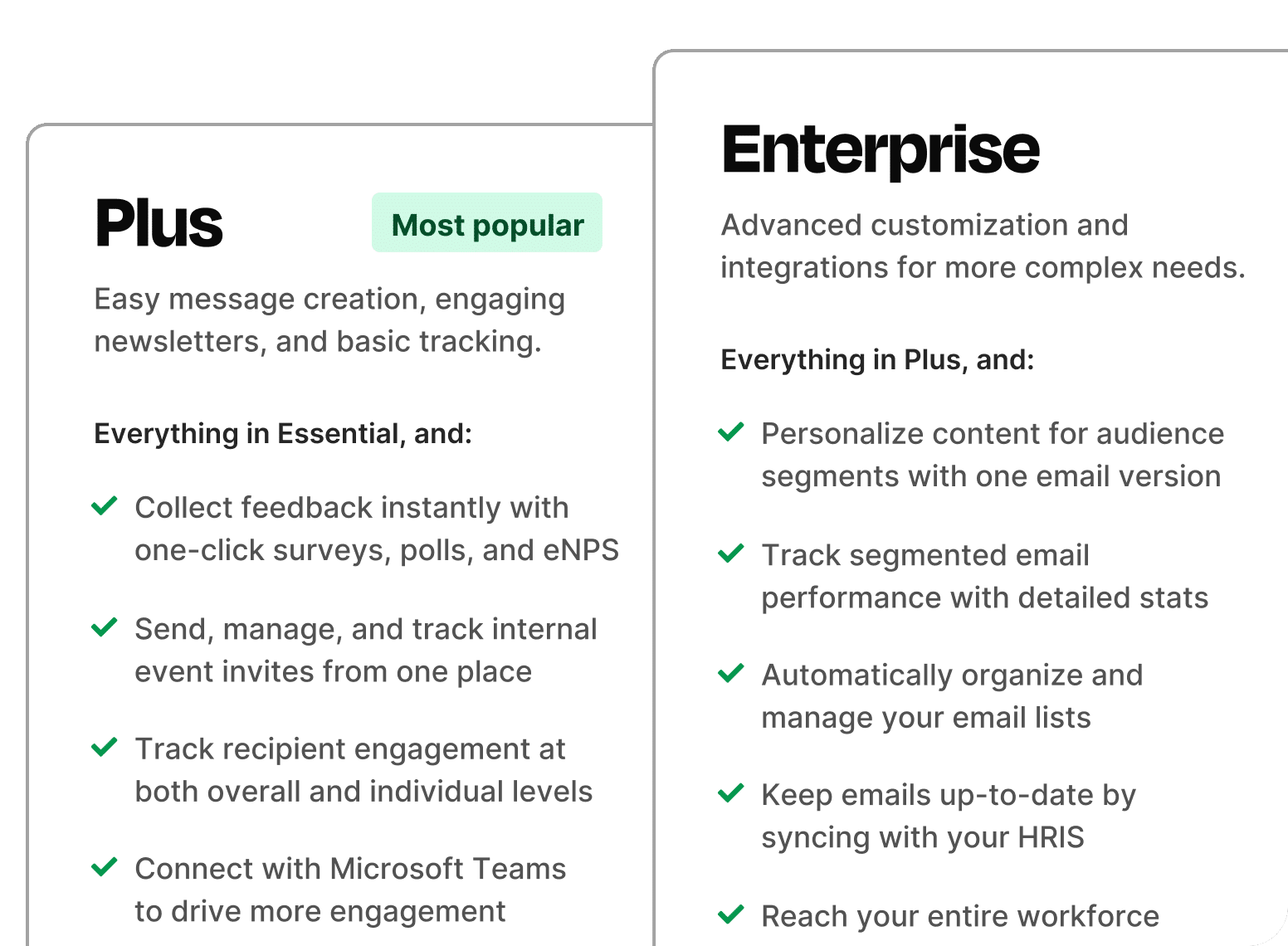
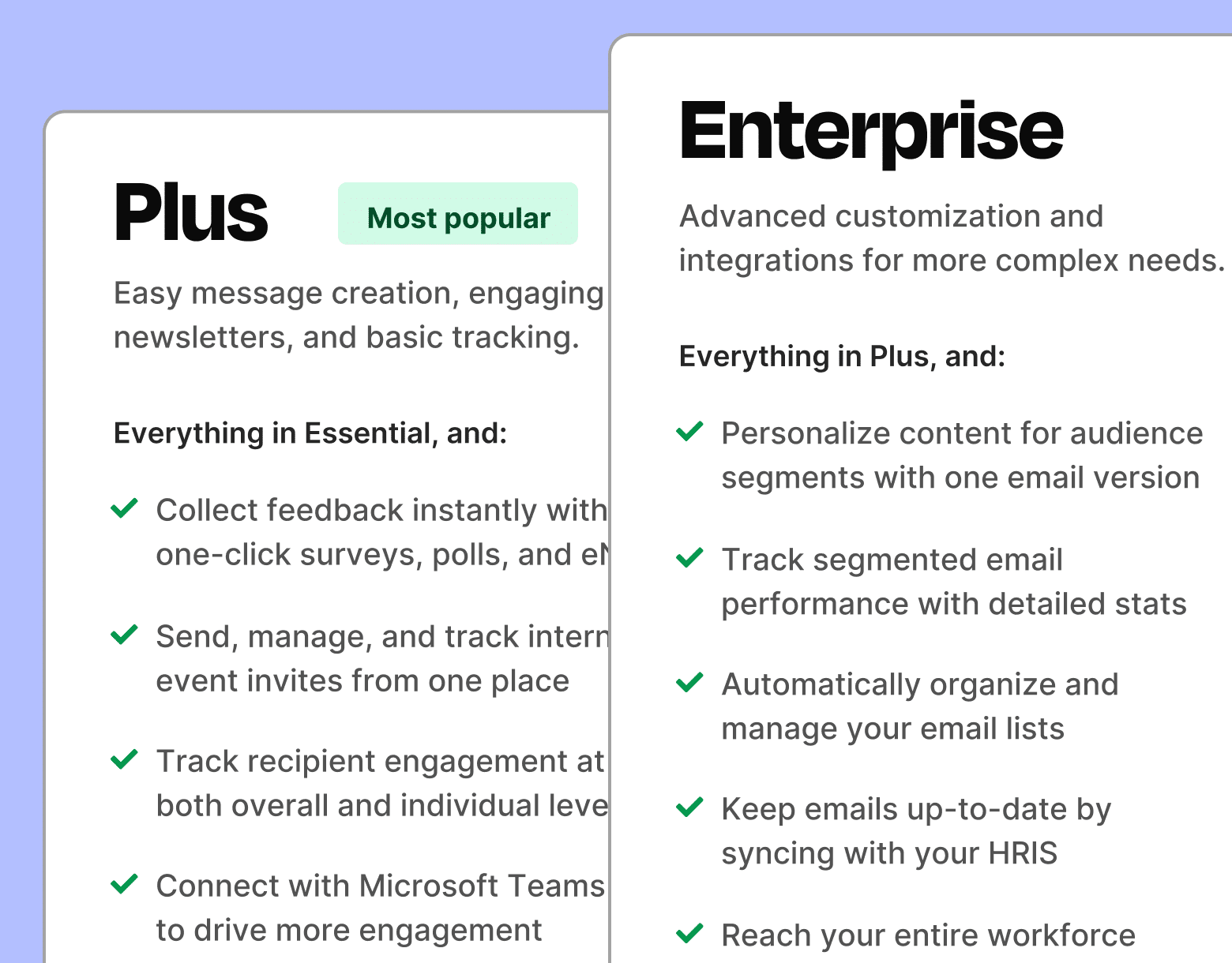
10. Measure and analyze communication metrics
Quantitative insights into employee engagement metrics like open rates, click-throughs, or engagement scores provide clarity on what’s working and what isn’t.
Why this matters:
- Data-driven decisions eliminate the guesswork in your internal comms approach.
- Analytics enable you to refine timing, tone, and channel preferences.
How to implement:
- Use solutions like ContactMonkey or other internal communication tools to track metrics on email opens and link clicks.
- Experiment with subject lines and content formats, then compare performance.
- Share your findings with leadership to secure further support or resources.
Actionable example: A professional services firm conducts A/B tests on employee bulletins. Results show a higher click-through rate for bulletins with concise headlines—leading them to adopt shorter headers in all future announcements.
Why You Need a Modern Internal Communications Tool
In this dynamic environment, the ability to communicate swiftly, clearly, and in a personalized manner can spell the difference between thriving and merely surviving. Here’s why a modern internal communications tool is important, especially in 2025:
- Change management support: As businesses grapple with market volatility, new technologies, and organizational shifts, modern platforms help streamline change efforts.
- Real-time, multi-channel reach: Modern tools enable communicators to share urgent updates across various channels—from email and chat apps to mobile SMS communication notifications—ensuring no one misses critical information.
- Data-driven insights: Advanced analytics lets you see which messages resonate most, who’s engaging, and where you might be losing interest.
- Personalized experiences: One-size-fits-all communication often falls flat. Tools with list management features, segmentation and dynamic content features enable you to tailor messages to different departments, roles, and geographies, boosting relevance and engagement.
- Two-way feedback: Surveys, polls, and quick-response forms empower employees to voice their thoughts, fueling a culture of openness.
By investing in a cutting-edge internal comms solution, companies equip themselves to meet the demands of an evolving workplace. Ready to get started? Book a free demo.


